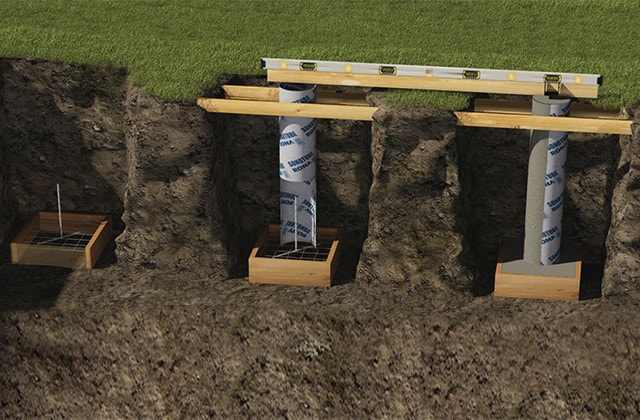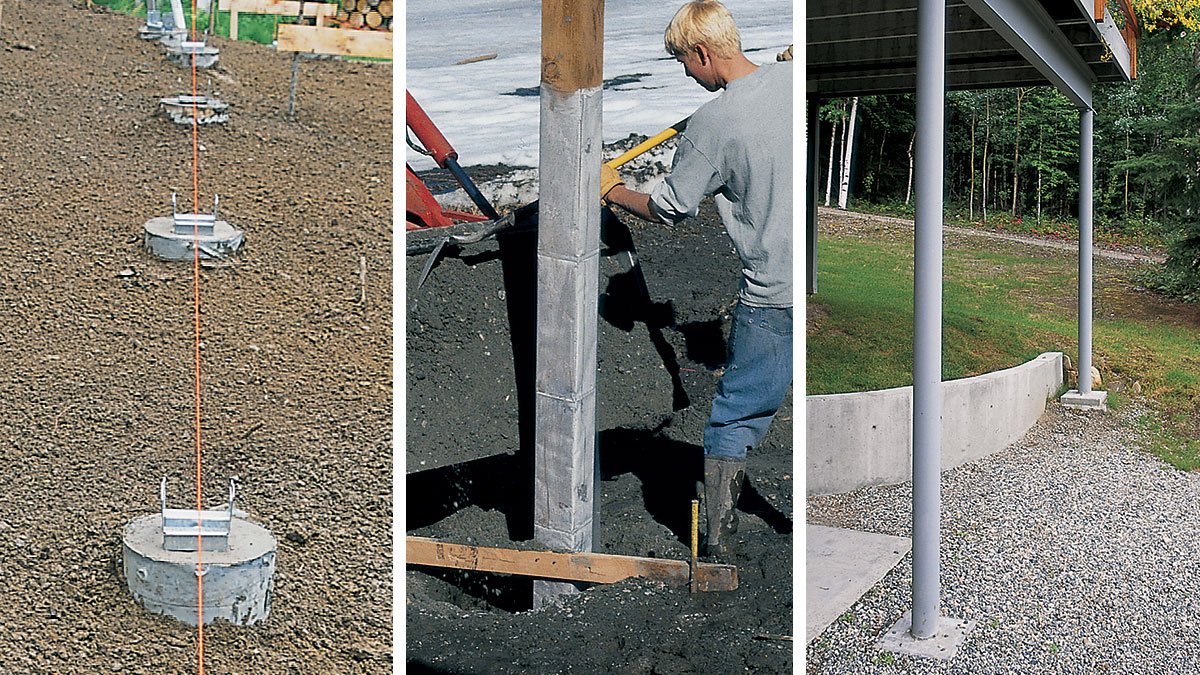Building from scratch: The Ultimate Guide to Designing and Installing Deck Footings
Picking the Right Deck Footings for Security and Longevity
When it involves developing a deck, among one of the most important decisions you will make is picking the appropriate footings for stability and longevity. The durability and security of your deck depend greatly on the type of footings you pick, as they offer the important assistance and stability to hold up against the test of time. With a myriad of alternatives readily available, it can be overwhelming to figure out which footings are best fit for your details requirements. In this conversation, we will explore the numerous kinds of deck grounds, think about the vital elements to consider when making a decision, and explore the benefits and drawbacks of different options. By the end, you will certainly have a clearer understanding of the options handy and be better furnished to make a notified decision for your deck job.
Sorts Of Deck Grounds
There are numerous types of deck grounds that can be made use of, each offering unique advantages and considerations. One common kind of ground is the concrete pier ground. These grounds are composed of a cylindrical opening full of concrete, which provides a solid foundation for the deck articles. Concrete pier grounds are reasonably very easy to set up and use superb security, making them a popular choice for many deck projects.
Another sort of footing is the helical pile footing. Helical heaps are steel shafts with helical plates affixed to them. These grounds are set up by screwing them right into the ground, which produces a safe foundation for the deck. Helical pile footings are ideal for areas with tough dirt conditions, as they can be set up in practically any kind of dirt. If needed., they also allow for very easy modification and leveling of the deck.
Additionally, some home builders choose precast concrete footings. These grounds are made from durable concrete and come in numerous forms and sizes to suit different deck layouts. Precast concrete footings are hassle-free to mount and supply a stable base for the deck framework.
Finally, one more option is the post-in-anchor ground system. This kind of footing includes driving a metal anchor right into the ground and connecting it to the deck post. It uses flexibility in terms of placing the deck articles and is suitable for decks with light-weight structures.
When selecting the appropriate kind of deck ground, it is necessary to take into consideration elements such as soil problems, deck load, and neighborhood building ordinance (Deck Footings). Consulting with a specialist contractor or structural designer can aid make certain the proper ground is chosen for a stable and risk-free deck
Factors to Think About When Selecting Grounds
When selecting the ideal footings for a deck, it is vital to carefully think about numerous variables such as dirt conditions, deck tons, and adherence to regional building regulations. These variables play a substantial role in making sure the security and toughness of the deck framework.
One of the primary elements to think about is the soil conditions. The type of soil on which the deck will be developed establishes the sort of grounds called for. Decks constructed on loosened or sandy dirts may need deeper footings to provide adequate assistance and prevent settling. On the other hand, decks improved clay or extensive soils may require footings that can suit the dirt's tendency to expand and contract.
An additional crucial element is the deck load. The weight of the deck, consisting of the products utilized and any possible live tons such as furnishings or celebrations, should be considered when choosing footings. The grounds should be designed to birth the weight of the deck and disperse it uniformly to avoid any kind of structural issues or failings.
Last but not least, adherence to regional building ordinance is extremely important. Building regulations vary from area to area, and it is vital to adhere to the details demands set by the neighborhood authorities. Deck Footings. These codes make certain that the deck is constructed securely and satisfies the essential requirements for architectural integrity and load-bearing ability
Concrete Footings: Advantages And Disadvantages

Concrete footings provide a number of advantages and downsides when used as the foundation for a deck. On the favorable side, concrete grounds provide outstanding stability and toughness.
An additional benefit of concrete grounds is their convenience. They can be poured into different forms and dimensions to fit various deck designs and configurations. Concrete footings can be customized to fit the certain requirements and demands of the deck structure.
Nonetheless, there are additionally some drawbacks to using concrete footings. This can enhance the overall expense of the deck project and might need professional assistance.

Helical Piers Vs. Sonotubes: Which Is Much better?
In considering the foundation options for a deck, the contrast in between helical piers and sonotubes is critical in determining the premium choice. They are twisted right into the ground making use of hydraulic machinery, offering a durable and secure structure for the deck.
When it pertains to stability and resilience, helical piers have the upper hand. The helical plates on the piers develop a solid hold with the soil, changing or preventing any kind of motion of the deck. This is especially valuable in locations with unstable or changing dirt conditions. Sonotubes, on the various other hand, depend solely on the concrete loading for stability, which might not supply the exact same level of stamina and resistance.
In regards to installment, helical piers are fairly easier and faster to set up compared to sonotubes. The hydraulic equipment used to twist the piers right into the ground guarantees a reliable and quick procedure. Sonotubes, on the various other hand, require excavating openings and putting concrete, which can be lengthy and labor-intensive.
Additionally, helical piers are a more flexible alternative. If needed, they can be used in numerous soil problems and can be readjusted or enhanced. Sonotubes, on the other hand, may require extra assistance, such as rebar, in particular dirt conditions or areas with find high tons demands.
Picking the Right Footings for Your Deck's Dimensions
For optimal architectural honesty, it is important to meticulously choose the ideal footings that straighten with the measurements of your deck. The measurements of your deck, including its height, width, and length, play a significant role in identifying the type and size of footings required.
When selecting footings for your deck, it is very important to think about the load-bearing capacity of the soil. The weight of the deck, combined with the weight of any furniture or people on it, exerts a significant force on the footings (Deck Footings). As a result, it is crucial to pick grounds that can adequately support this weight without changing or sinking over time.
Larger decks with better measurements require bigger footings to provide adequate security and support. The form of the footings, whether they are rounded or square, depends on the layout and layout of the deck.
Final Thought
In final thought, picking the best deck grounds is important for making sure security and sturdiness. Aspects such as the kind of grounds, the deck's measurements, and the pros and disadvantages of different options ought to be taken into consideration.
These grounds are composed of a round opening filled with concrete, which provides a strong foundation go to this site for the deck blog posts. Concrete pier grounds are relatively easy to install and provide outstanding security, making them a special info preferred selection for many deck projects.
Precast concrete grounds are practical to install and offer a stable base for the deck structure.
It provides flexibility in terms of positioning the deck articles and is suitable for decks with lightweight frameworks.
Concrete grounds supply numerous benefits and disadvantages when made use of as the structure for a deck.